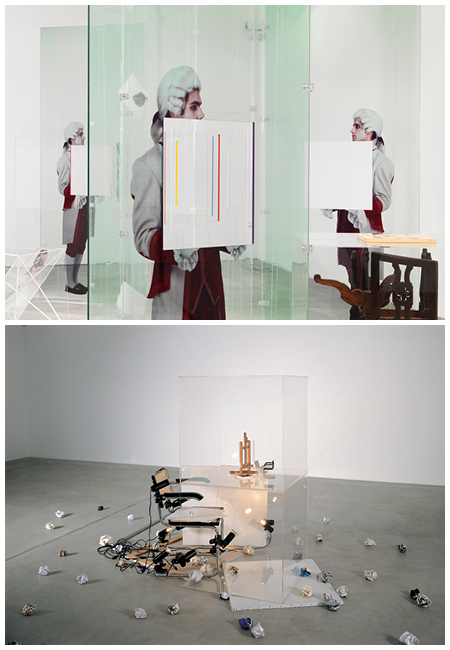Curator Daniel Herrman discusses the Italian conceptualist’s contribution to debates on authenticity and authorship![Alfa (Un autore senza nome) [Alpha (An Author without Name)] 2004. Collection of the artist / Courtesy Marian Goodman Gallery, New York © Giulio Paolini](https://storage.googleapis.com/s8partner-pm_wp/1/2014/07/2.-WG.-Giulio-Paolini_Alfa-Un-autore-senza-nome_2004.jpg)
I recently took part in a market research exercise around the idea of brand authenticity. What I discovered is this: people heavily associate authenticity with originality, or at least the idea of it. People distrust imitation and buy into the idea of a personal history.
No surprises there, this is marketing bread and butter. But it got me thinking about the work of Italian conceptual artist Giulio Paolini, a retrospective of whom opens this week at the Whitechapel Gallery, titled To Be or Not to Be. Paolini frequently visually cites not only his own work in his art, but also classic pieces from art history, particularly the Renaissance. 1969’s ‘Elegia’ featured a plaster cast of an eye from Michelangelo’s ‘David’ for instance. He states: “To be authentic, a work of art must forget about its author.” He has no time for romantic notions of authorship.
“reassessment of what authorship is and how authorship works is especially important in the digital age”

“Paolini strongly believes that the artwork is not necessarily rooted in personal expression of the self, but much rather a consequence of the history and the conditions of art that bring it about,” says curator Daniel Herrman of the Whitechapel Gallery. “He constantly questions our relationship as a beholder to the artwork and his relationship as the artist and author. He was one of the formative figures in the 1960s to question and overcome concepts of authorship.”
What of the subtle visual clues to his presence in his canvasses, installations and sculptures, frequently Paolini’s own face, hands or eyes? This feels like a contradiction. Not so, says Daniel: “He uses these traces and clues to hint at the ‘absence’ of the author, through what seems almost to be artistic footprints that he leaves behind for us to see and to follow, but never to actually find. The artist, as a figure in the work of Paolini, is evasive and ever fleeting. It’s down to us to enter into a dialogue with the artwork. He thinks of himself as a messenger, rather than a maker of art.”
The exhibition presents some of Paolini’s most important works from 1960 onwards, as well as a specially commissioned installation from the 73 year old. “It shows an artist’s desk with possibilities of how to work, how to conceive ideas of how to make work happen, a projection of different images of different ideas relevant to art onto a wall with the traces and hints of artworks drawn onto it,” enthuses Daniel. “At the same time we see a chair discarded, empty and thrown on the ground and apparently the artist, who we always envisage as the one who ‘realises’ an artwork, seems to be gone, vanished. We’re left alone with the artwork.” It’s almost as if Paolini has made a swift exit just as the doors to the gallery are swung open to the public.
It’s been almost 35 years since the last major exhibition of Paolini’s work in the UK so why now, I ask Daniel? “Now is really the moment when a lot of artists, a lot of younger producers, makers and practitioners, are really reassessing the generation of artists that Paolini was a part of, so the ideas of conceptualism and those of Italian artists including Michelangelo Pistoletto and Mario Merz. We feel it’s the right moment to look at his engagement with notions of authorship, notions of what makes an artwork, what constitutes an artwork and how do we think and conceive of an artwork. His reassessment of what authorship is and how authorship works is especially important in the digital age.”
Perhaps by taking himself out of the equation, arguably forgoing ego, Paolini is truly original.
To Be or Not to Be runs at Whitechapel Gallery, London from 9 July to 14 September




